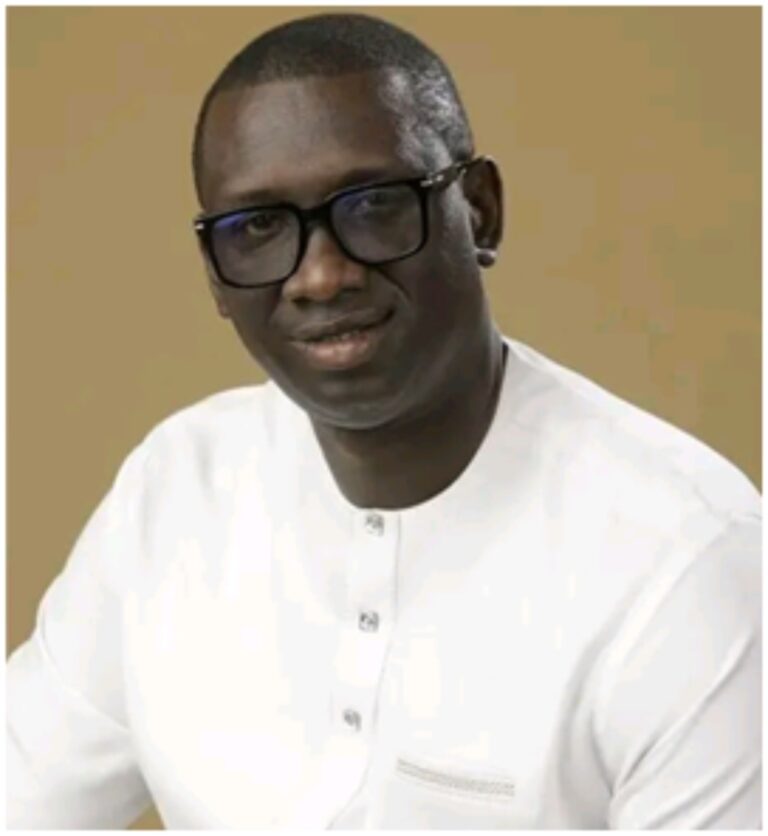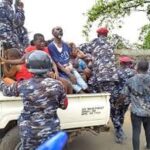A Review by Sheriff Mahmud Ismail
On March 5, 2014, the United Nations Secretary-General, Ban Ki-moon announced the folding up of the United Nations Integrated Peacebuilding Office in Sierra Leone (UNIPSIL). In doing so at a joint press conference in Freetown, alongside President Ernest Bai Koroma, Ban Ki-moon said that “Sierra Leone represents one of the world’s most successful cases of post-conflict recovery, peacekeeping and peacebuilding” (source).
In their extraordinary piece of literary masterpiece, Umarr Deen Sesay et al. have flung open the doors to that treasured storehouse. The Legacy of Leadership Under Ernest Bai Koroma and the APC is as meticulous in its scholarship as it is rich in its insight. It captures, with moving fidelity, the sheer magnitude of the Koroma years. As the authors rightly note, “His leadership style was not aloof and abstract but tactile, urgent, and deeply involved in the everyday struggles of ordinary citizens.” Anyone who witnessed the Koroma era would appreciate that this book is a vivid documentary of purpose-driven governance, where development was not a promise deferred but a living reality under a leader whose days began with the sunrise and often stretched into the early hours of the next morning. President Koroma did not treat governance as theatre, he handled it as an all-consuming vocation.
This work, therefore, brings nostalgic reminder of the Sierra Leone we began to rebuild with solemnity, guided by a man whose work ethic bordered on delivering results for the wider citizenry.
As someone who saw his leadership up close, across the stately halls of State House, in high-stakes deliberations, and amid the dust and sweat of nation-building projects, I can confidently affirm that President Koroma did not govern from an ivory tower. I saw him, sleeves rolled up, crisscrossing the country’s provinces, his convoy trailing the scent of progress, roads rising from the rubble, lights blinking to life in once-dark towns, hospitals breathing again with new equipment, medical supplies, performance-based incentives for health workers, and hope rekindled in the eyes of the people. His infrastructural programme was more than concrete and steel; it was the laying of national sinews, tying together a wounded land with the balm of connectivity, opportunity, and pride.
The authors beautifully presents this, “Each completed highway and each illuminated village street was a verse in the national recovery hymn, a testimony to a government that chose action over apathy.”
Legacy of Leadership provides an accurate account of that golden era in Sierra Leone’s post-conflict renaissance. It highlights that more than just diligence, his was a hands-on leadership. President Koroma followed up personally on programmes, kept volumes of handwritten diaries filled with action points, and conducted on-the-spot inspections of projects anywhere, at any time. Most often, these inspections took place under the veil of dawn or in the quiet hours of night, when the city slept but governance carried on.
As documented in the book, “Koroma’s infamous early morning and late night project inspections earned him a reputation of a President who worked while others rested.”
He was intimately aware of the pulse of every Ministry, Department, and Agency. His appointees knew the standards expected of them, for he kept them on their toes with a quiet but unmistakable intensity.
His leadership was also deeply inclusive and profoundly accessible. From councillors to paramount chiefs, from civil servants to informal community leaders, every layer of society could reach him, and in turn felt seen and heard. That accessibility, that down-to-earth sincerity, may well have been the alchemy behind his success. It is what helped keep the country peaceful, reform-minded, and unified during his tenure.
The authors describe this inclusivity with clarity: “By placing the chiefdoms, districts, and grassroots communities at the centre of his development map, President Koroma redefined governance as a two-way street.”
Every chiefdom, every district, every community felt touched by his government. His pro-poor, grassroots-oriented programmes were not selective, they were national, deliberate, and dignifying.
Further, the book rightly emphasises his stewardship over democratic reforms, media freedoms, judicial independence, and institutional strengthening, all amid a global economic downturn and a public health crisis of biblical proportions. His grace under pressure and refusal to exploit national tragedy for personal glorification revealed a moral compass too seldom found in modern politics.
Even when the volume of work was immense, President Koroma did not abandon the rhythms of duty. I marveled at his unwavering discipline: punctual, composed, and mentally alert—all of which testifies to his rare devotion to his nation’s rebuilding.
The authors affirm, “Despite the overwhelming challenges, Koroma chose governance with grit, embracing the burdens of office with humility and single-minded focus.”
These were not symbols of showmanship, but arteries of national regeneration. What we see today, and often take for granted, are manifestations of a vision carefully executed under his supervision.
By every standard, Legacy of Leadership… chronicles all these with a blend of fact and fervour. It captures that journey with a historian’s precision and a poet’s heart. What it accomplishes is to provide, for posterity, a truthful, passionate, and unflinching account of that extraordinary journey. A profoundly authentic narrative of Sierra Leone’s post-conflict rebirth; it speaks of the President I knew: compassionate, deeply thoughtful yet principled, receptive to divergent views, yet resolute when the stakes called for conviction, inclusive yet deliberate in action.
Let it be declared without apology: no rewriting of history can eclipse the radiance of President Koroma’s service. As espoused, his legacy is solid granite, etched into the story of our republic and reaffirmed by the lived experiences of millions. This book, therefore, is a mirror held to one of Sierra Leone’s finest chapters. It is more than a tribute; it is a torch passed on. Let it illuminate not only the path from whence we came, but the standard of leadership to which we must aspire.
Let those who read it do so with gratitude and clarity, for in these pages lies the soul of a nation at its best.
As one who has made modest but sincere efforts to contribute to the immortalisation of his legacy, through documentation, storytelling, and public memory, I salute Umarr Deen Sesay and the Progressives for this laudable intervention. As I am far advanced in doing, I urge other patriots, scholars, and witnesses of that administration to follow suit. The burden of telling our story, and telling it well, rests on our shoulders.
I unreservedly commend to every Sierra Leonean, to friends of Sierra Leone and to everyone interested in true examples of hands-on, inclusive leadership in Africa that delivers reforms, strengthens democracy, consolidates peace and rebuilds a nation destroyed by war.
Once again, the hard cover of this extraordinary work is now available on Amazon. Please follow the link to acquire your copy:







Sign Out: The Rise of a New Campus Ritual